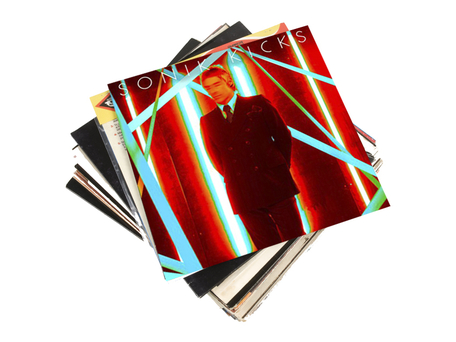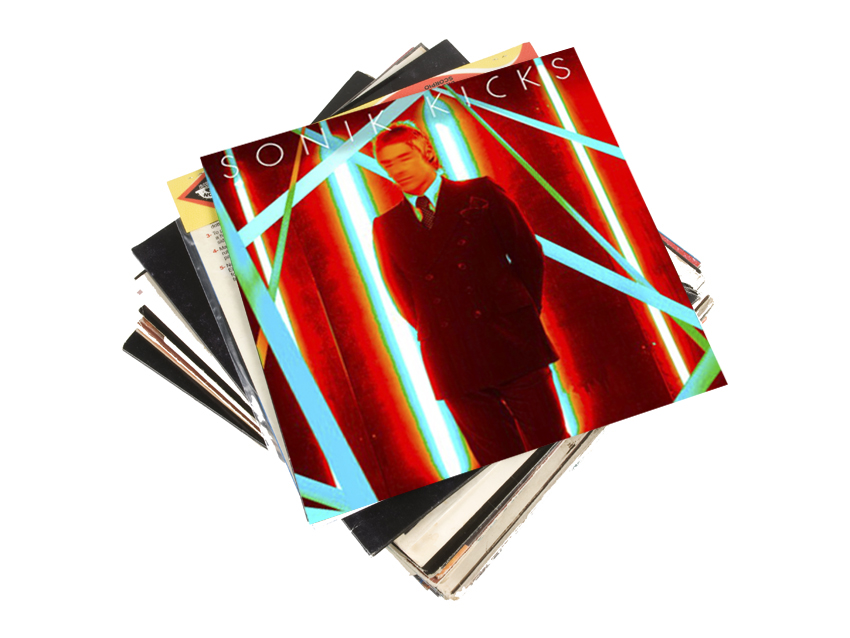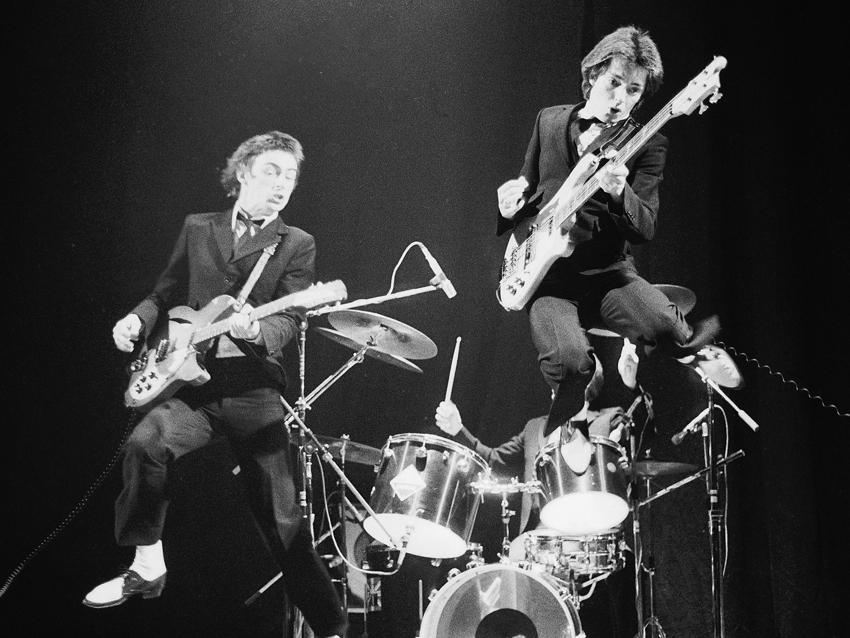Paul Weller: Sonik Kicks track-by-track review
Our verdict on Weller's new album for 2012


The music he made with The Jam some 30 years ago is enough for Paul Weller to have earned his place in the history books, an impressive enough body of work for fans to overlook the occasional missteps that followed.
The Style Council weren't everyone's cup of tea, but still produced some powerful and vital work, especially the album Our Favourite Shop. Weller's second rebirth, as a solo artist, started well, the albums Wild Wood and Stanley Road both musically eloquent and lyrically articulate statements, the man himself growing up at the same pace as his original new wave audience.
A patchy period followed, but he was back on track with 2008's 22 Dreams and 2010's award-winning Wake Up The Nation, a genuinely reinvigorated writer and performer with little to prove but a lot more still to say. Subsequently, Weller's new album has been eagerly awaited; would be able to sustain such an astonishing level of quality? Would he be content just to rest on his laurels?
This is Paul Weller, though, one of the most passionate artists of his generation, and Sonik Kicks finds him refusing to sit still. Laurel-resting is not on the agenda...
Green
The abrasive electronica of the opening bars appears to map out new territory for Weller, a symptom of his recent conversion to the vintage 1970s sounds of Krautrock figureheads Neu.
Staying on the same chord throughout, synths and feeback guitar breaks weave from speaker to speaker across the vocals. Lyrically, the free form half-spoken words bring to mind Pop Art Poem, a rarity from the days of The Jam.
The Attic
A further meshing of musical styles, this cryptic tale of forlorn love is underpinned by pizzicato strings that could have been borrowed from the early '60s hits of Adam Faith, yet the rhythm track and thunderous bass belongs to the raucous garage rock of a few years later.
Get the MusicRadar Newsletter
Want all the hottest music and gear news, reviews, deals, features and more, direct to your inbox? Sign up here.
With Noel Gallagher helping out on guitar, Weller places himself in the middle of the maelstrom, the attic of the title referencing happier, less romantically fraught days.
Kling I Klang
More German influences, with the wiry instrumentation of Krautrock battling for supremacy against a strident melody reminiscent of pre-war Berlin cabaret, with a smidgen of Eastern European folk thrown into the mix.
For all its mannered vaudeville, the song actually couches a serious lyric, with Weller cataloguing a string of observations about war in the Middle East.

Weller onstage at Coachella festival. © Tim Mosenfelder/Corbis
Sleep Of The Serene
An abstract instrumental soundscape, originally meant to be the opening of a longer piece that has yet to see the light of day. Weller and fellow guitarist Aziz Ibrahim exchange disjointed passages, the chaos and improvisation tempered by melodic strings, arranged by Sean O'Hagan of The High Llamas.
By The Waters
Ibrahim and O'Hagan loom large again, with Weller revisiting the reflective pastoral hues of 1993's Wild Wood album on a delicate ballad. The soft-strummed guitars resound with ghostly Nick Drake motifs, but it's O'Hagan's strings that give the track extra depth and texture.
That Dangerous Age
The 53-year-old Weller is in gently self-mocking mode on a song initially inspired by onlookers' reactions to the age gap between him and his young wife Hannah (more of whom later).
A not altogether serious study of a perceived mid-life crisis, the falsetto backing vocals and clipped funky rhythms owe a debt to Motown and Stax, although the descending chords of the bridge are closer to 60s Brit psychedelia.
Study In Blue
Hannah steps up to the mic for a trippy, jazzy duet that drifts toward atmospheric dub in its second half. Weller himself describes it as one of the most uncomplicated, straightforward love lyrics he's ever written, and also acknowledges its musical debt to his Style Council days.
Dragonfly
Continuing the family motif, the trance-like space rock with a vibrato bass line by Marco Nelson is complemented by a lyric inspired by a poem his youngest daughter Jessie wrote at school. "I just took the first line from each verse and built on them," he says.
Blur's Graham Coxon weighs in on both angular guitar lines and Hammond organ.
When Your Garden's Overgrown
Featuring Noel Gallagher on guitar and bass, this rousing singalong and portrait of English eccentricity has an obvious connection to The Kinks' songs of Weller's childhood, although he says the free-spirited central character of the lyric is more inspired by Syd Barrett, pondering what the Pink Floyd founder might have been had he not pursued a career in music.

The Jam. © Denis O'Regan/CORBIS
Around The Lake
Another Krautrock adventure, with added Goth elements. The monotone of the verse gives way to an anthemic chorus with more than a hint of Joy Division.
The most striking musical compoment however, is the intermittent injections of fractious guitar, similar to the Rickenbacker riffs of The Jam.
Twilight
Following on from Sleep Of The Serene, this is a second brief instrumental interlude ("a soundscape," as Weller himself describes it). Again condensed from a longer piece which may still turn up as a bonus track or download, there's not much to say about the twisty synths of this 20-second segment.
Drifters
Co-written with Ocean Colour Scene's Steve Craddock, who also plays guitar, the mystical eastern rhythms veer towards flamenco, although Weller's initial inspiration for the song was the eloquent jazz of John Coltrane.
The dirge-like vocal line brings to mind George Harrison's more experimental work, while the guitars rage with old school punk venom.
Paperchase
A gentle elegy for lost souls, the song's sombre reflection, chugging guitar and understated harmonies recall the quieter moments in Blur's back catalogue (Beetlebum, in particular).
Weller says the song was written quickly to a drum loop, a practice he's rarely employed previously, and concedes that the lyric may have been subconsciously inspired by the deaths of two friends, Amy Winehouse and fashion designer Alexander McQueen.

© Rune Hellestad/Corbis
Be Happy Children
Weller first wrote about family and fatherhood on Moon On Your Pyjamas from Wild Wood, and here he again celebrates his offspring, two of whom are along for the ride.
His six-year-old son Mac adds a backing vocal to the last chorus, but the most striking vocal contribution comes from his daughter Leah, sounding uncannily like her mother Dee C Lee.
An uplifting, positive end to an eclectic album, it's arguably the most immediate and accessible of the 14 songs, a gorgeous pop soul anthem with Weller's voice rarely sounding better.
Conclusion
The law of averages probably dictates that Weller might falter slightly after the high watermarks of 22 Dreams and Wake Up The Nation, and while it's true that Sonik Kicks isn't quite a match for its two predecessors, its strengths more than outweigh its weaknesses.
Some of the more experiment numbers don't quite hit the mark, and may have benefited from a longer gestation period, a little more application in the studio. But his sense of adventure and hunger to challenge both himself and his audience should be applauded, when many other artists of his age might have settled for simply trading on past glories.
"At first the tension was unbelievable. Johnny was really cold, Dee Dee was OK but Joey was a sweetheart": The story of the Ramones' recording of Baby I Love You
"Reggae is more freeform than the blues. But more important, reggae is for everyone": Bob Marley and the Wailers' Catch a Fire, track-by-track









